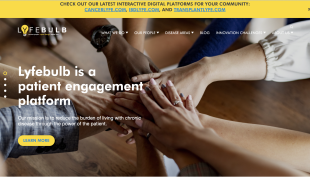- 7073
- 482
- 8
- 9
- 0
- Help Ukraine
About the solution
Diabetes affects millions of people around the world. People diagnosed with this disease have to control their blood sugar levels all the time. To do this, they have to lance themselves multiple times a day in order to obtain a drop of test blood. When doing this day-after-day, it can lead to a lifetime of discomfort, especially on bruised, calloused and progressively numb fingertips.
When Christopher got a call from an old friend asking him to conceive a painless lancing instrument that would work from anywhere on the body, he accepted the challenged and started working. He gathered other engineers and began researching all the available literature on developing technologies to test glucose levels without the dreaded finger stick and found that most were useless to his friend. So, he realised that he had to start thinking "outside the box". The combination of vacuum and depth control really worked, blocking pain for the first time, as well as allowing lancing from anywhere on the body. It wasn’t and easy process but this was the beginning of Genteel.
“Over eight years in development, and with many frustrations and challenges along the way, Genteel as a product is a reality.”, Christopher said.
“I really could reliably deliver painless blood draw from anywhere on the body using a single light hand-held instrument.”, said Christopher.
Christopher found a mechanical engineer to work with him and together they started the production and function optimization of each part.
Finally, in 2009, he got his first patent and got his device into the market.
“Now, anyone-whether a diabetic, on blood thinners, or those using an at-home test kit, can reliably, repeatedly, and painlessly draw a drop of test blood from anywhere on their body. My friend is happy, which makes me happy!”, Christopher said.
Adapted from: https://insight.ieeeusa.org/articles/the-genteel-story-ieee-senior-membe...
More info: https://www.mygenteel.com/
https://www.youtube.com/watch?v=tjmYpWXJIq4
This solution shall not include mention to the use of drugs, chemicals or biologicals (including food); invasive devices; offensive, commercial or inherently dangerous content. This solution was not medically validated. Proceed with caution! If you have any doubts, please consult with a health professional.
DISCLAIMER: This story was written by someone who is not the author of the solution, therefore please be advised that, although it was written with the utmost respect for the innovation and the innovator, there can be some incorrect statements. If you find any errors please contact the patient Innovation team via info@patient-innovation.com
-
-
586
-
0
-
9986

Software to help diabetics
CAREGIVING
(SELF)-CARE: EATING: Eating independently.
(SELF)-CARE: DRINKING: Drinking independently.
diabetes type 1
diabetes type 2
Treatment/Surgical device
App (Including when connected with wearable)
Muscle weakness
Excessive thirst or hunger
Increased urination
Dry skin
Promoting self-management
Managing diabetes
To improve Treatment/Therapy
Caregiving Support
Endocrinology
General and Family Medicine
France
-
-
-
579
-
2
-
12409

OmniPod® - a wireless insulin pump
(SELF)-CARE: EATING: Eating independently.
CAREGIVING
(SELF)-CARE: EATING: Eating independently.
diabetes type 1
diabetes type 2
Gestational Diabetes
Body-Worn solutions (Clothing, accessories, shoes, sensors...)
Enhancing health literacy
Promoting self-management
Restoring heart health
Managing diabetes
Manage Medication
Preserving Organ Function
Promoting inclusivity and social integration
To implement a diagnostic tool
To improve Treatment/Therapy
Preventing (Vaccination, Protection, Falls, Research/Mapping)
Raise awareness
Caregiving Support
Endocrinology
General and Family Medicine
Pediatrics
United States
-
-
-
268
-
0
-
2990

Diabetic Karin Hehenberger created Lyfebulb to reduce the burden of living with chronic disease through the power of the patient.
(SELF)-CARE: EATING: Eating independently.
(SELF)-CARE: DRINKING: Drinking independently.
CAREGIVING
diabetes type 1
Website
Muscle weakness
Excessive thirst or hunger
Increased urination
Sleep disturbances
Depression or anxiety
Heat or cold intolerance
Mood swings
Difficulty concentrating or making decisions
Fatigue
Weight gain
Hair thinning or brittleness
Slow heartbeat (bradycardia)
Enhancing health literacy
Promoting self-management
Managing diabetes
Building Supportive Community Relationships
Promoting inclusivity and social integration
To improve Treatment/Therapy
Dermatology
Endocrinology
General and Family Medicine
Medical Genetics
United States
-
 en
en